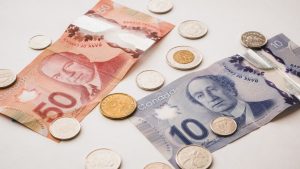Forex trading, also known as foreign exchange trading, is the process of buying and selling currencies with the aim of making a profit. It is the largest financial market in the world with a daily turnover of over $5 trillion. The forex market is open 24 hours a day, 5 days a week and is accessible to anyone with an internet connection. In this article, we will delve into the basics of forex trading and provide a guide on how to get started.
Understanding the Forex Market
Before delving into how to trade forex, it is essential to understand the basics of the market. The forex market is a decentralized market, which means that there is no central exchange for trading. Instead, traders can buy and sell currencies through various financial institutions, such as banks and brokers. The currencies are traded in pairs, such as EUR/USD, GBP/USD, and USD/JPY. The first currency in the pair is called the base currency, while the second currency is called the quote currency.
The exchange rate between the two currencies fluctuates constantly based on various factors such as economic data, political events, and central bank decisions. Traders aim to profit from these fluctuations by buying a currency when it’s low and selling it when it’s high or vice versa. It’s important to note that forex trading involves a high degree of risk, and traders should only trade with money they can afford to lose.
Choosing a Forex Broker
To start trading forex, you need to open an account with a forex broker. There are numerous forex brokers available, and it’s essential to choose a reputable broker that is regulated by a financial authority. The broker should also offer a trading platform that is easy to use, with access to real-time charts, technical indicators, and market news.
It’s also important to consider the fees charged by the broker, such as spreads, commissions, and overnight rollover fees. The spreads are the difference between the bid and ask price, and the commission is the fee charged by the broker for executing the trade. The overnight rollover fee is charged when a trader holds a position overnight and is based on the interest rate differential between the two currencies.
Developing a Trading Strategy
To succeed in forex trading, you need to develop a trading strategy that suits your trading style and risk tolerance. A trading strategy should include a set of rules for entering and exiting trades, risk management, and position sizing. It’s important to backtest the strategy on historical data to ensure its profitability before trading with real money.
There are various trading strategies available, such as technical analysis, fundamental analysis, and price action trading. Technical analysis involves using charts and technical indicators to identify trading opportunities, while fundamental analysis involves analyzing economic data and news events to determine the direction of the market. Price action trading involves analyzing price movements and patterns to identify trading opportunities.
Risk Management
Risk management is an essential aspect of forex trading and involves managing your trading capital to minimize losses. Traders should always use stop-loss orders to limit their potential losses, and should never risk more than 2% of their trading capital on any single trade. It’s also important to have a trading plan and stick to it, without letting emotions influence your trading decisions.
Conclusion
Forex trading can be a lucrative venture for those who are willing to put in the time and effort to learn how to trade forex. It’s important to understand the basics of the market, choose a reputable forex broker, develop a trading strategy, and practice good risk management. With the right approach, forex trading can be a rewarding experience for traders of all levels.





